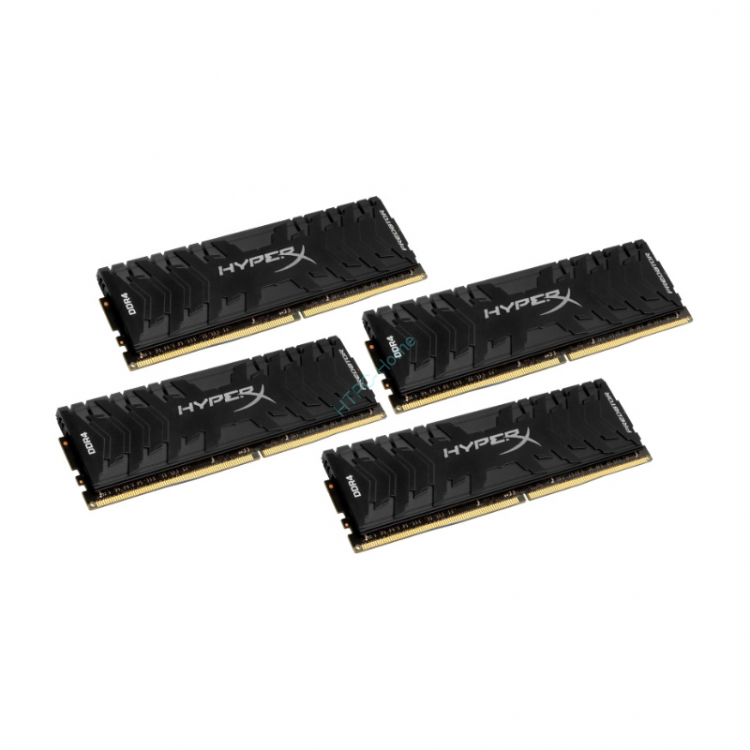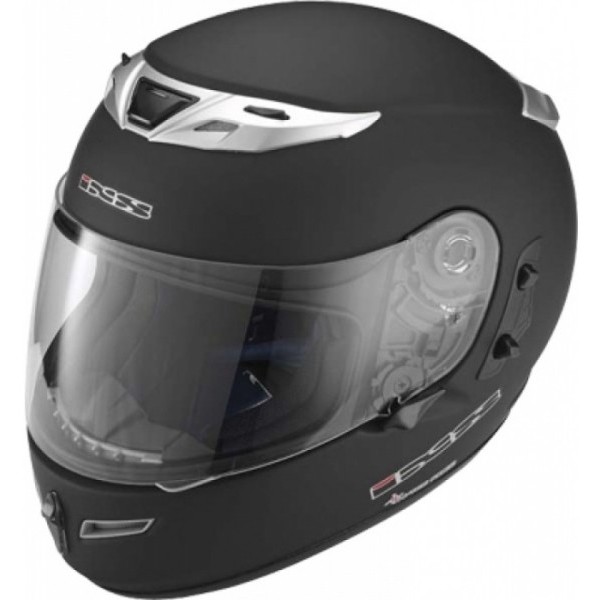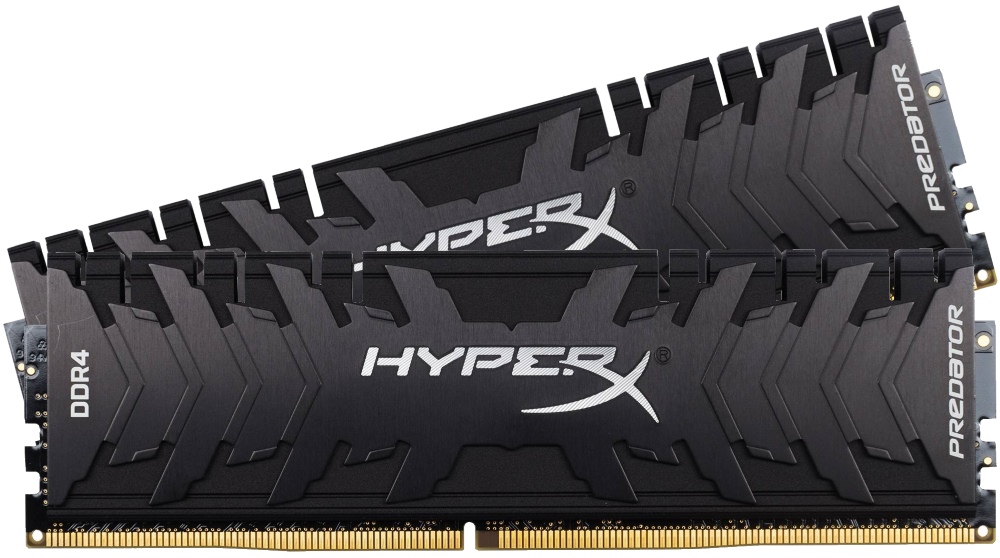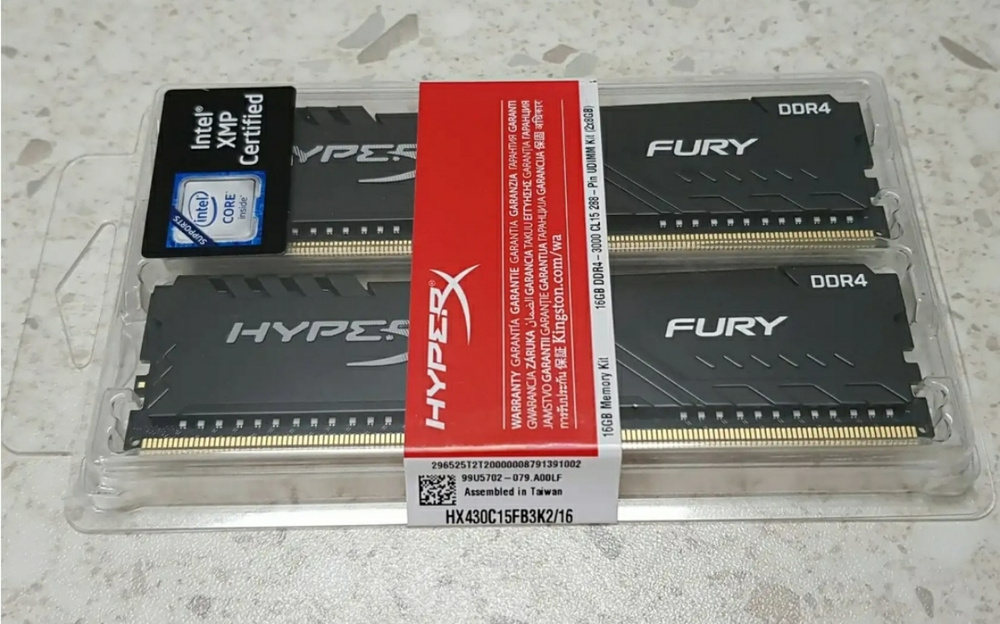Intel 430HX — Chipset Guide
by Anand Lal Shimpion August 1, 1997 9:36 PM EST
- Posted in
- Guides
4 Comments
|
4 Comments
IndexALi Aladdin IVALi Aladdin VIntel 430FXIntel 430HXIntel 430TXIntel 430VXIntel 440FXIntel 440BXIntel 440LXIntel 440GXSiS 5571SiS 5591SiS 5598VIA VP1VIA VP2VIA VPXVIA VP3VIA MVP3VIA Apollo ProVXPro
With Intel’s newly found place
in the chipset industry they decided to improve on their already outstanding design by
creating the long awaited successor to the 430FX chipset. This time around, Intel focused
their attention more on high end speed and power rather than simply «getting the job
done». It is this attitude that gave the 430HX chipset the leading edge over the rest
of the market for quite some time, however motherboard manufacturers were reluctant to
charge the outstanding cost of the HX chipset. Some manufacturers decided to cut corners
by including a degraded Tag RAM chip which only enables the first 64MB of RAM to be cached
instead of the Maximum 512MB.
The Performance of the Triton II is still
quite competitive today with most higher end processors and configurations. Unlike the
original triton, this successor has the ability to support dual CPUs as well as ECC DRAM
and USB. The EDO timings on the HX Chipset are considerably faster than those on the FX
chipset which means you can expect a greater overall memory performance with the HX
Chipset, especially if using over 64MB of RAM, the cacheable limit of the FX. The HX
Chipset also extends CPU compatibility to IBM/Cyrix as well as AMD and Intel which makes
it a better competitor even today. Its PIIX3 BMIDE Controller is considerably faster than
the PIIX controller found in the FX chipset, however it still doesn’t support the UltraDMA
specification. The Triton II was also the first chipset to even unofficially support the
The Triton II was also the first chipset to even unofficially support the
83.3MHz bus frequency now very common in most decent motherboards today.
| Intel 82430HX Chipset | ||
| Common Name | Triton II | |
| Chipset Packaging | Number of chips | 2 (82439HX System
Controller, 82371SB) |
| Packaging Type | 1 x 324-pin BGA; 1 x
208-pin lead QFP |
|
| CPU Support | Number of CPUs | 2 |
| AMD CPUs Supported | K5, K6 | |
| Cyrix CPUs Supported | 6×86 (M1), 6x86MX (M2) | |
| Intel CPUs Supported | Pentium, Pentium MMX | |
| Cache | Type | Pipeline Burst Cache |
| Maximum Supported Size | 512KB | |
| Maximum Cacheable DRAM Area | 64MB or 512MB (depending
on Tag RAM) |
|
| Memory | Maximum DRAM Supported | 512MB |
| BEDO DRAM Read Timings (66MHz) | N/A | |
| EDO DRAM Read Timings (66MHz) | 5-2-2-2 | |
| FPM DRAM Read Timings (66MHz) | 5-3-3-3 | |
| SDRAM Read Timings (66MHz) | N/A | |
| Data Path to Memory | 64-bits | |
| ECC Support | Yes | |
| Hard Disk Controller | Chip | PIIX3 (82371SB
Controller) |
| Busmastering Support | Yes | |
| UltraDMA Support | No | |
Max. Theoretical Transfer Rate Theoretical Transfer Rate |
PIO Mode 4/DMA Mode 2
(16.6MB/S) |
|
| PCI Interface | Supported PCI Bus Speeds | 25, 30, 33 MHz |
| Concurrent PCI | Yes | |
| Async. PCI Bus Speed | No | |
| PCI Specification | 2.0 (66 MHz max.) | |
| Power Management | PC97 Compliance | No |
| Suspend to Disk | No | |
| HDD Power Down | Yes | |
| Modem Wakeup | No | |
| System Suspend | No | |
| Video | AGP Support | No |
| Unified Memory Architecture | No | |
| Peripheral Support | USB Support | Yes |
| Plug and Play Port | Yes | |
| Write Buffers | CPU-to-DRAM | 16 QWords |
| CPU-to-PCI | 6 DWords | |
| PCI-to-DRAM | 20 DWords | |
| Officially Supported Bus Speeds | 50, 55, 60, 66 MHz | |
| Unofficially Achieved Bus Speeds | 68, 75, 83. 3 MHz 3 MHz |
|
Intel 430FX
Intel 430TX
IndexALi Aladdin IVALi Aladdin VIntel 430FXIntel 430HXIntel 430TXIntel 430VXIntel 440FXIntel 440BXIntel 440LXIntel 440GXSiS 5571SiS 5591SiS 5598VIA VP1VIA VP2VIA VPXVIA VP3VIA MVP3VIA Apollo ProVXPro
PRINT THIS ARTICLE
Intel 430HX (PCIset HX Triton II)
Intel 430HX (PCIset HX Triton II)
DescriptionDownloads
Chipset parts:
Intel 82439HX (TXC)
Intel 82371SB (PIIX3)
- 82371SB (PIIX3)
The 82371SB (PIIX3) PCI ISA IDE Xcelerator is a multi-function PCI device implementing a PCI-to-ISA bridge function and an PCI IDE function. In addition, the PIIX3 implements a Universal Serial Bus host/hub function. As a PCI-to-ISA bridge, the PIIX3 integrates many common I/O functions found in ISA-based PC systems—a seven-channel DMA controller, two 82C59 interrupt controllers, an 8254 timer/counter, and power management support. In addition to compatible transfers, each DMA channel supports type F transfers. Chip select decoding is provided for BIOS, real time clock, and keyboard controller. Edge/Level interrupts and interrupt steering are supported for PCI plug and play compatibility. The PIIX3 supports two IDE connectors for up to four IDE devices providing an interface for IDE hard disks and CD ROMs. The PIIX3 provides motherboard plug and play compatibility. PIIX implements two steerable DMA channels (including type F transfers) and up to two steerable interrupt lines. PIIX3 implements one steerable interrupt line. The interrupt lines can be routed to any of the available ISA interrupts. PIIX3 also implements a programmable chip select.
In addition to compatible transfers, each DMA channel supports type F transfers. Chip select decoding is provided for BIOS, real time clock, and keyboard controller. Edge/Level interrupts and interrupt steering are supported for PCI plug and play compatibility. The PIIX3 supports two IDE connectors for up to four IDE devices providing an interface for IDE hard disks and CD ROMs. The PIIX3 provides motherboard plug and play compatibility. PIIX implements two steerable DMA channels (including type F transfers) and up to two steerable interrupt lines. PIIX3 implements one steerable interrupt line. The interrupt lines can be routed to any of the available ISA interrupts. PIIX3 also implements a programmable chip select.
PIIX3 contains a Universal Serial Bus (USB) Host Controller that is UHCI compatible. The Host Controller’s root hub has two programmable USB ports. PIIX3 also provides support for an external IOAPIC.
Features:
- Bridge Between the PCI Bus and ISA Bus
- PCI and ISA Master/Slave Interface
- PCI from 25–33 MHz
- ISA from 7.
 5–8.33 MHz
5–8.33 MHz - 5 ISA Slots
- Fast IDE Interface
- Supports PIO and Bus Master IDE
- Supports up to Mode 4 Timings
- Transfer Rates to 22 MB/Sec
- 8 x 32-Bit Buffer for Bus Master IDE PCI Burst Transfers
- Separate Master/Slave IDE Mode Support
- Plug-n-Play Port for Motherboard Devices
- 2 Steerable Interrupts Lines on the PIIX and 1 Steerable Interrupt Line
- 1 Programmable Chip Select
- Steerable PCI Interrupts for PCI Device Plug-n-Play
- PCI Specification Revision 2.1 Compliant
- Functionality of One 82C54 Timer
- System Timer; Refresh Request; Speaker Tone Output
- Two 82C59 Interrupt Controller Functions
- 14 Interrupts Supported
- Independently Programmable for Edge/Level Sensitivity
- Enhanced DMA Functions
- Two 8237 DMA Controllers
- Fast Type F DMA
- Compatible DMA Transfers
- 7 Independently Programmable Channels
- X-Bus Peripheral Support
- Chip Select Decode
- Controls Lower X-Bus Data Byte Transceiver
- I/O Advanced Programmable Interrupt Controller (IOAPIC) Support
- Universal Serial Bus (USB) Host Controller
- Compatible with Universal Host Controller Interface (UHCI)
- Contains Root Hub with 2 USB Ports
- System Power Management (Intel SMM Support)
- Programmable System Management Interrupt (SMI)—Hardware Events, Software Events, EXTSMI#
- Programmable CPU Clock Control (STPCLK#)
- Fast On/Off Mode
- Non-Maskable Interrupts (NMI)
- PCI System Error Reporting
- NAND Tree for Board-Level ATE Testing
- 208-Pin QFP
Last updated 2019-04-29T22:00:00Z
Drivers:
1 entry
Language
Media type
OS Compatibility
Name
Version
1x
Windows 95
Windows NT 3. 5
5
Windows NT 4.0
OS/2 Warp 3.0 ?
Intel PIIX Busmaster IDE Drivers
Unknown
Documentation:
3 files
-
82371SB PCI ISA IDE Xcelerator (PIIX3) Timing Specification(English)
-
82371SB/FB Datasheet(English)
-
INTEL 430HX PCISET 82439HX SYSTEM CONTROLLER (TXC)(English)
Image 1 of 3 (computerguy096)
Image 2 of 3 (computerguy096)
Image 3 of 3 (Sebastián Alpuy)
Disclaimer
The info found in this page might not be entirely correct. Check out this guide to learn how you can improve it.
Check out this guide to learn how you can improve it.
honda cr 250
A A A A
Author
Subject: honda cr 250 (Read 13192 times)
0 Members and 1 Guest are browsing this thread.
Camper
I changed the engine, now there is a honda cr 250 in frame 01 with a 98 engine. mikuni carb. well worth the exhaust fmf fatty + shorty.
Recorded by
Antifly
Gentlemen, calm down!
Yes, sir!!!
Recorded by
Wild Country Warrior driving…
If a man is bitten by a vampire, he becomes a vampire. It seems that many around were bitten by sheep.
Strong people are always a little rude, they like to be sarcastic and smile a lot.
skrickis
Do you know what set of jets should be for tuning, what needle is in stock for a 98g engine? What set in the carburetor do you have now? Did you look at the manuals? The fact is that there are some jet numbers on Mikuni for tuning.

CR 250 jettings standartnije poziciji karbov 86-03 goda
18033 S. Santa Fe Ave
Rancho Dominguez, CA
-5514
PH: 310-631-4363 FX: 310-900-5699
www.fmfracing.com tech @fmfracing.com
[02-03 / #000300]
HONDA CR250 JETTING RECOMMENDATIONS
Here are our jetting suggestions for your CR250. We’ve spent countless hours of testing to determine which settings work best
when bolting on one of our pipes and silencers to a stock machine. These are recommendations only, based upon our testing at
sea-level atmospheric pressure, a 65-80F degree ambient air temperature, a 32:1 fuel to oil mixing ratio on super unleaded
pump fuel with a stock motor.
For some models we offer a Power Up jet kit for optimum tuning. Kits may include jets, needles and any necessary hardware
and have been developed with the assistance of Dynojet.
There are too many variables outside of our control to give you an exact configuration that works perfectly under all conditions. Our
Our
recommendations are just that, a starting point to reference from. Higher elevations, high humidity, hotter temperatures are examples that will
require leaner jetting. Colder temperatures are an example that will require richer jetting.
If you are unknowledgeable or don’t feel comfortable tuning your machine yourself, find a mechanic in your area who is. FMF Racing is not
responsible for problems derived from improper jetting and/or usage.
Always check that your jetting is correct when changing parts that could affect the intake system, exhaust system and any product or change
that could alter fuel combustion in the cylinder (ie. aftermarket ignition module).
Check out our website www.fmfracing.com for additional information.
Use the following suggestions when using a FMF Fatty, Factory Fatty, Gnarly, Rev or SST exhaust pipe.
2003
Main Jet 400
Pilot Jet 40
Needle 38-70
Clip Position 1ST
Air Screw 1. 5 out
5 out
2002
Main Jet 380
Pilot Jet 32.5
Needle STOCK
Clip Position 3RD
2001
Main Jet 400
Pilot Jet 30
Needle STOCK
Clip Position 2ND
Air Screw 1.5 out
Air Screw 1.5 out
2000
Main Jet 178
Pilot Jet 45
Needle STOCK
Clip Position 3RD
Air Screw 1.5 out
1999
Main Jet 178
Pilot Jet 42
Needle STOCK
Clip Position 2ND
Air Screw 1.5 out
1998
Main Jet 172
Pilot Jet 55
Needle STOCK
Clip Position 3RD
Air Screw 1.5 out
1997
Main Jet 175
Pilot Jet 55
NEEDLE STOCK
CLIP POSITION 3ND
AIR SCREW 1.5
1996
Pilot Jet 52
NEEDLE R1369N
CITEP0027 Air Screw 1.5 out
1995
Main Jet 172
Pilot Jet 52
Needle R1369N
Clip Position 3RD
Air Screw 1.5 out
1994
Main Jet 172
Pilot Jet 55
Needle R1369N
Clip Position 3RD
Air Screw 1. 5 out
5 out
1993
Main Jet 175
Pilot Jet 55
Needle R1369N
Clip Position 3RD
Air Screw 1.5 out
1992
Main Jet 170
Pilot Jet 55
Needle R1369N
Clip Position 2ND
Air Screw 1.5 out
1991
Main Jet 175
Pilot Jet 55
Needle R1369N
Clip Position 2ND
Air Screw 1.5 out
1990
Main Jet 175
Pilot Jet 55
Needle R1369N
Clip Position 2ND
Air Screw 1.5 out
1988
Main Jet 185
Pilot Jet 62
Needle STOCK
Clip Position 3RD
Air Screw 1.5 out
1987
Main Jet 175
Pilot Jet 58
Needle STOCK
Clip Position 3RD
Air Screw 1.5 out
1989
Main Jet 178
Pilot Jet 58
Needle STOCK
Clip Position 3RD
Air Screw 1.5 out
1986
Main Jet 175
Pilot Jet 60
Needle STOCK
Clip Position 3RD
Air Screw 1.5 out
Recorded by
Camper
thank you very much, useful info, I’ll take it apart and see what I have.
ps. I can’t get to the computer, today, tomorrow there will be a photo)
Recorded by
Camper
so there is Ch. jet 430, xx 35. the needle is on the 2nd position from above. As I understand it, the main one needs less, xx more, right?
Recorded by
Camper
Need to order such a kit as I understand it? http://www.ebay.com/itm/220974396662?ssPageName=STRK:MEWAX:IT&_trksid=p3984.m1423.l2649
Recorded by
skrickis
so there is Ch. jet 430, xx 35. the needle is on the 2nd position from above. As I understand it, the main one needs less, xx more, right?
tebe PWK or PJ karb stanndarte u 98 goda PJ , po zikloram u tebja PWK i etot karb sol s 2001 goda
Recorded by
Camper
I got to the computer. Carb in principle works fine, but there are no idlers. I also can’t figure out if the curtain is set up incorrectly or if it’s Fatty that gives such an effect. At the bottom-middle, the thrust is rather weak compared to the previous 250, but the top of the oyaebu opens up, can this moment be shifted closer to the middle by adjusting the curtain, or will it not work with such a resonator?
Carb in principle works fine, but there are no idlers. I also can’t figure out if the curtain is set up incorrectly or if it’s Fatty that gives such an effect. At the bottom-middle, the thrust is rather weak compared to the previous 250, but the top of the oyaebu opens up, can this moment be shifted closer to the middle by adjusting the curtain, or will it not work with such a resonator?
Recorded by
Voldemar
make the blind open early.
Recorded by
an experienced miller can show pi on his fingers
Camper
How exactly to do it? Only with a bolt on the left side, which is under the plug or under the cover of the mechanism itself, do you also need to do something?
Recorded by
ritt
At the bottom-middle, the traction is rather weak compared to the previous 250, but the top of the oyaebu opens
it seems that the cylinder was not ticked.
the blind is adjusted by the cover on the right with a hexagon and not on the left.
Recorded by
this is such a greatness: Routing Information Typical Traffic well, abbreviated as ritt
Intel 430 TX and VIA Apollo VP-3 chipset testing
A recent chipset for Pentium-based motherboards, the VIA Apollo VP-3 can extend the life of Socket-7 based systems by using AGP technology. This will allow users of P5 processors to access high-speed 3D graphics. Since Intel has abandoned the production of such chipsets, the question of changing the motherboard based on the i430TX chipset may arise.
The purpose of this article is to compare 9 chipsets0286 Intel 430TX and VIA Apollo VP-3 . For example, I’m talking about testing the performance of two motherboards — ASUS TX97 based on the Intel 430TX chipset and the recently released MyComp AI5VG based on the VIA Apollo VP-3 chipset supporting AGP. Otherwise, the tested systems used the same components — DIMM SDRAM 32Mb Hyundai, Virge DX 4Mb EDO video card, Quantum Fireball ST 2.1Gb hard drive and Intel Pentium 200MHz MMX processors, as well as AMD K6 / PR2-200, which optimized second board.
Otherwise, the tested systems used the same components — DIMM SDRAM 32Mb Hyundai, Virge DX 4Mb EDO video card, Quantum Fireball ST 2.1Gb hard drive and Intel Pentium 200MHz MMX processors, as well as AMD K6 / PR2-200, which optimized second board.
- Temperature control
- Support AGP
- Support ESS
would have been compared by the speed of the PCI Videma, as the application of the Middle Keepers and the secondary
Compared chipset specifications
| Intel 430 TX | VIA Apollo VP-3 | ||||
|---|---|---|---|---|---|
| Maximum L2 cache size | 64m | 1024M | |||
| DRAM | |||||
| FPM BURST | 5-3-3-3-3-3 | EX | 5-2-2-2-2-296 | ||
| SDRAM BURST | 5-1-1 | 5-1-1-1-1-1-1-1-1-1-1-1-1-1-1-1-1-1-1-1-1-1-1-1-1-1-1-1-1-1-1-1-1-1-1-1-1-1-1-1-1-1-1-1 9029s | N | N | |
| Buffer | |||||
| CPU-to-DRAM 95 Number of chips | 2 | 4 | |||
Test results
The following were used as performance tests: ZD Winbench 97, running in Windows 95 with a resolution of 1024x768x24bit and installed Bus Master drivers from manufacturers of Bus Master chipsets; Xing MPEG Player — testing FPS in the window; Quake running in DOS without sound at a resolution of 320×200.
When installed on Intel Pentium 200 MMX processor boards, the following results were obtained:
| ASUS TX97 | MyComp AI5VG |
|
|---|---|---|
| CPUMark16 | 424 | 430 |
| CPUMark32 | 412 | 422 |
| Business Disk Winmark | 1230 | 1050 |
| HighEnd Disk Winmark | 4330 | 3700 |
| Business Graphics Winmark | 39.4 | 41.2 | 423 |
| CPUMark32 | 527 | 517 |
| Business Disk Winmark | 1110 | 1150 |
| HighEnd Disk Winmark | 4440 | 4190 |
| Business Graphics Winmark | 42 | 42.6 |
| HighEnd Graphics Winmark | 28 | 28.3 |
| Xing MPEG Player, FPS | 55. 8 8
| 0296 |
| Quake, FPS | 34.2 | 33.3 |
VP-3. The low speed of disk operations in the VIA VP-3 is most likely explained by the imperfection of the hard disk controller drivers, and not by the chipset problems.
Traditionally, we tested the speed of working with memory and caches on these motherboards. With a Pentium processor, it turned out to be the following (bus frequency 66 MHz):
AI5VG
9029
memory entries. However, this lag in real work is not noticeable.
In general, based on the test results, it is impossible to say what is good and what is bad. Draw your own conclusions.
Overclocking
As for overclocking capabilities, the VIA chipset and the Intel chipset are in equal conditions — both companies documented only the external frequency of 66 MHz. The tested motherboard with the VP-3 chipset did not have the ability to set an external frequency of 83 MHz, so we can assume that the i430TX overclocks better. However, on the other hand, VIA promises to release a mobile version of its chipset with official support for the 100 MHz bus. Therefore, no definite conclusion can be drawn.
The tested motherboard with the VP-3 chipset did not have the ability to set an external frequency of 83 MHz, so we can assume that the i430TX overclocks better. However, on the other hand, VIA promises to release a mobile version of its chipset with official support for the 100 MHz bus. Therefore, no definite conclusion can be drawn.
Stability and compatibility
As for the stability and compatibility of the board based on the VIA Apollo VP-3 chipset, no glitches were noticed during testing. All the main office software running on the computer ran successfully without errors. The main set of devices — the drive, CD ROM were installed and worked without problems. Separate problems were only encountered in the fight against PnP and the Chinese ESS1868, but most likely it was the sound card. Separately, I would like to note the existence of Bus Mastering drivers, which were developed by VIA for their chipsets. These drivers are also successfully installed and working.
Summary
So, from the above, we can conclude that the VIA chipset can be used to use AGP graphics with a Pentium processor.
